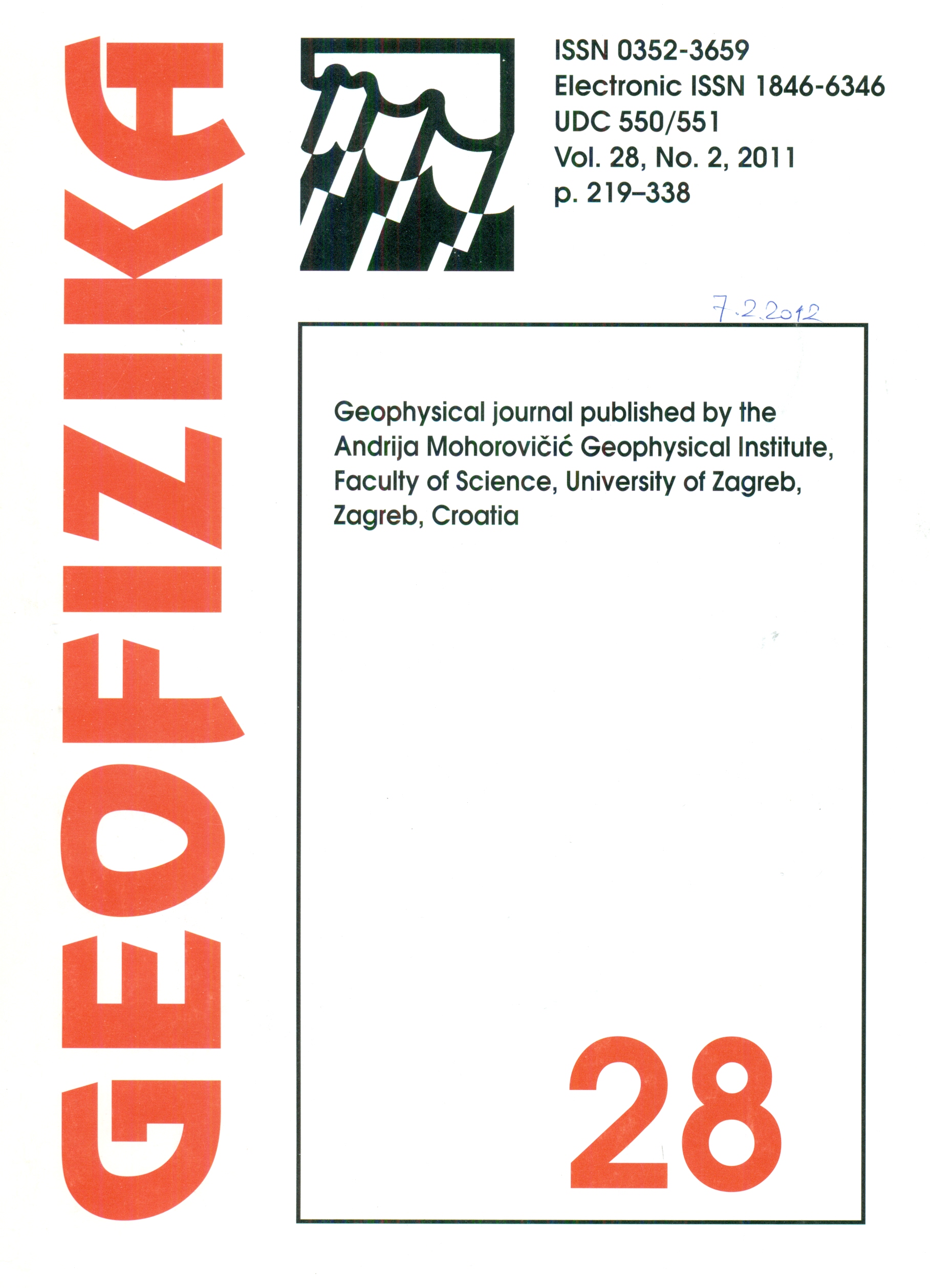Crustal structure beneath Istra peninsula based on receiver function analysis
Keywords:
Istra, crustal structure, P receiver function, forward modellingAbstract
The structure of the Earth’s crust has been determined at three temporary seismic stations in Istra (Croatia) installed as a part of the passive seismic experiment ALPASS‑DIPS (Alpine Lithosphere and Upper Mantle PASsive Seismic Monitoring - DInarides-Pannonian Segment). The stations were located at the north-eastern edge of the Adriatic microplate. The knowledge of the crustal structure under Istra will help the understanding of the tectonic evolution within the broader region of the contact between Adria and Eurasia. Teleseismic data recorded at three-component stations were analyzed using the P receiver functions method, which allows detecting seismic discontinuities within the crust and upper mantle below the stations. To determine more detailed crustal structure, we have done 1‑D forward modelling of receiver functions. The results of modelling are the S-wave velocity models of the crust beneath the stations. Calculated receiver functions showed three converted phases in the first 5 s of delay time, thus suggesting three seismic discontinuities in the crust, that is, discontinuity in the shallowest part of the upper crust, intracrustal discontinuity, and the Mohorovičić discontinuity. A forward modelling approach at all three stations showed a shallow high‑velocity zone observed at a depth between 2 and 8 km. This zone may probably be related to an anhydrite series with dolomite alternations characterised by high seismic velocity. Intracrustal discontinuity is defined at a depth between 18 and 21 km. Models of the shear velocity at the three stations show a decreasing of the Moho depth from 43 km at the northern Istra to 37 km at the south-eastern part of Istra.
Downloads
Published
Issue
Section
License
Copyright (c) 2021 Geofizika journal

This work is licensed under a Creative Commons Attribution-NonCommercial 4.0 International License.

